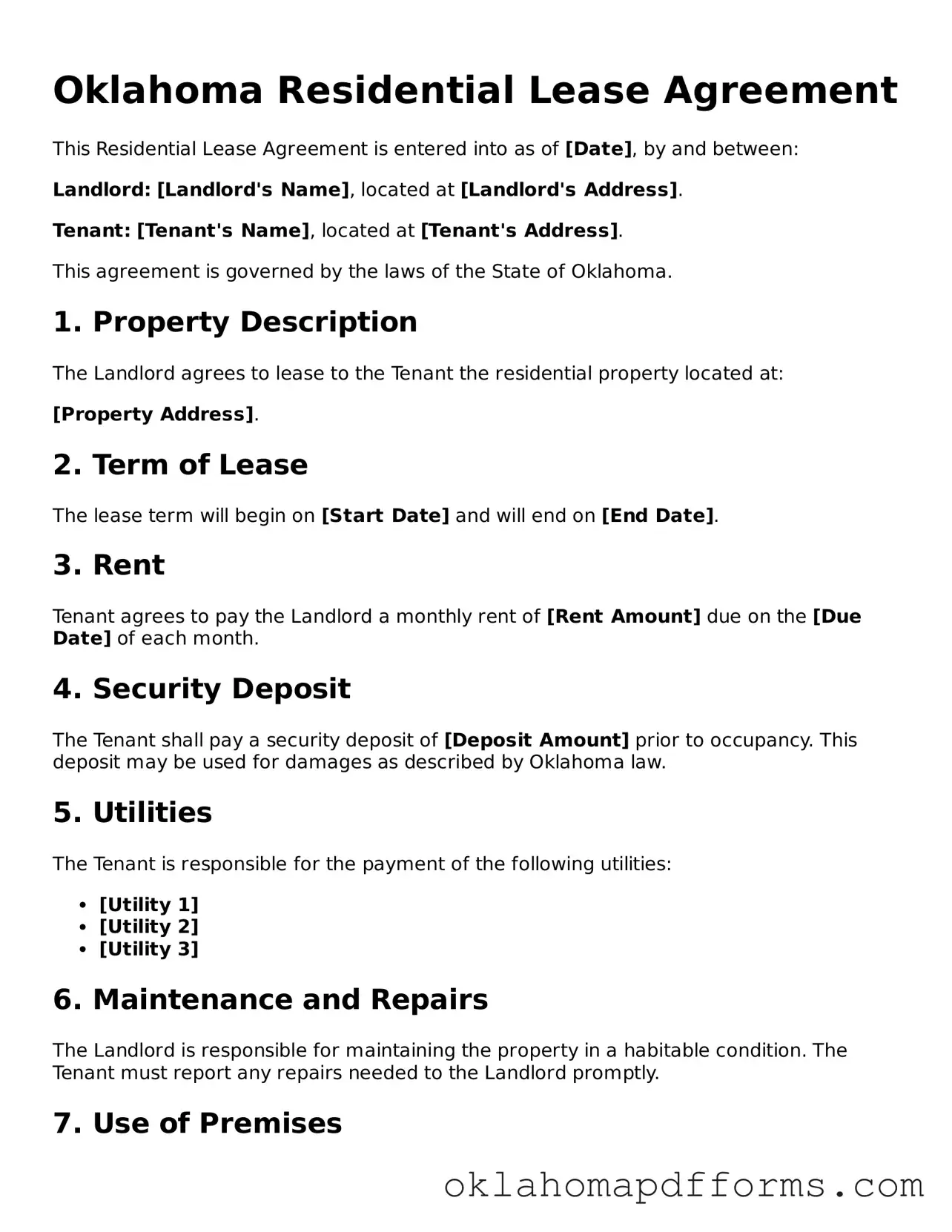What is an Oklahoma Residential Lease Agreement?
The Oklahoma Residential Lease Agreement is a legally binding document that outlines the terms and conditions under which a landlord rents property to a tenant. This agreement typically includes details such as the duration of the lease, rental amount, security deposit, and responsibilities of both parties.
Who needs a Residential Lease Agreement?
Both landlords and tenants benefit from having a Residential Lease Agreement. Landlords need it to protect their property and establish clear expectations, while tenants require it to understand their rights and obligations during the rental period.
What key elements are included in the agreement?
Essential elements of the Oklahoma Residential Lease Agreement include the names of the parties involved, property address, lease term, rent amount, payment due dates, security deposit details, maintenance responsibilities, and rules regarding pets and guests.
How long does a typical lease last?
Lease durations can vary. Commonly, leases last for one year, but they can also be month-to-month or for a shorter term. The specific length should be clearly stated in the agreement.
Can the lease be modified after it is signed?
Yes, a lease can be modified, but both parties must agree to any changes. It is advisable to document any modifications in writing and have both parties sign the updated agreement to avoid misunderstandings.
What happens if a tenant needs to break the lease early?
If a tenant needs to break the lease early, they should review the agreement for any specific clauses regarding early termination. Generally, tenants may be responsible for paying rent until a new tenant is found or until the lease expires, unless otherwise stated in the agreement.
Are there any restrictions on the use of the property?
Yes, the Residential Lease Agreement may include restrictions on the use of the property. Common restrictions include prohibitions against illegal activities, subletting without permission, and specific rules regarding noise and disturbances.
What is a security deposit, and how is it handled?
A security deposit is a sum of money collected by the landlord to cover potential damages or unpaid rent. In Oklahoma, landlords must return the security deposit within 45 days after the lease ends, minus any deductions for damages or unpaid rent, which should be documented.
What rights do tenants have under the lease?
Tenants have several rights under the lease, including the right to a habitable living environment, privacy, and proper notice before entry by the landlord. These rights should be outlined in the lease agreement and are protected by state law.
What should a tenant do if there are disputes?
If disputes arise, tenants should first attempt to resolve the issue directly with the landlord. If that does not work, they may seek mediation or legal advice. It is important to keep records of all communications related to the dispute.
